Hexagonal Shapes
A hexagon is a polygon with six sides and six angles. It is a two-dimensional shape that falls under the category of polygons. The sum of the interior angles of a hexagon is always 720 degrees. Each interior angle in a regular hexagon measures 120 degrees. In a regular hexagon, all the sides and angles are equal in measure, while in an irregular hexagon, the sides and angles may vary in size.
Properties of a Hexagon:
- A hexagon has six sides.
- The sum of the interior angles of a hexagon is 720 degrees.
- Each interior angle in a regular hexagon measures 120 degrees.
- The exterior angles of a hexagon add up to 360 degrees.
- The perimeter of a hexagon is the sum of its six side lengths.
- The area of a regular hexagon can be calculated using the formula:
Area = (3√3 / 2) * s2 where s is the length of a side.
Types of Hexagons:
There are two main types of hexagons:
- Regular Hexagon: A hexagon with all equal sides and angles.
- Irregular Hexagon: A hexagon with unequal sides and angles.
Real-life Examples of Hexagons:
Hexagons can be found in various real-life objects and structures, such as:
- Honeycomb cells
- Snowflakes
- Nuts and bolts
- Some floor and wall tiles
- Some chemical compounds
Study Guide:
When studying hexagons, it's important to familiarize yourself with the following concepts:
- Identifying and drawing hexagons.
- Understanding the interior and exterior angles of a hexagon.
- Calculating the perimeter and area of a regular hexagon.
- Classifying hexagons as regular or irregular.
- Recognizing hexagons in real-life objects.
Practicing with exercises and problems involving hexagons can help reinforce your understanding of the topic.
[Hexagonal Shape] Related Worksheets and Study Guides:
.◂Math Worksheets and Study Guides Seventh Grade. The Pythagorean Theorem
Study Guide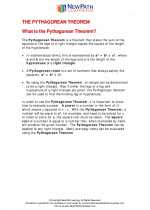 The Pythagorean Theorem
The Pythagorean Theorem  Study Guide
Study Guide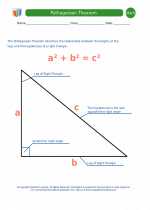 Pythagorean Theorem Definitions
Pythagorean Theorem Definitions  Worksheet/Answer key
Worksheet/Answer key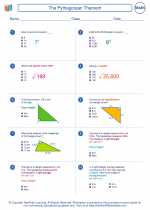 The Pythagorean Theorem
The Pythagorean Theorem  Worksheet/Answer key
Worksheet/Answer key The Pythagorean Theorem
The Pythagorean Theorem  Worksheet/Answer key
Worksheet/Answer key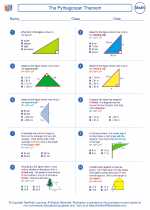 The Pythagorean Theorem
The Pythagorean Theorem  Worksheet/Answer key
Worksheet/Answer key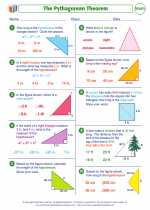 The Pythagorean Theorem
The Pythagorean Theorem  Worksheet/Answer key
Worksheet/Answer key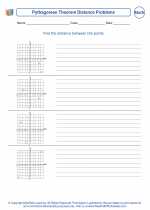 Pythagorean Theorem Distance Problems
Pythagorean Theorem Distance Problems  Worksheet/Answer key
Worksheet/Answer key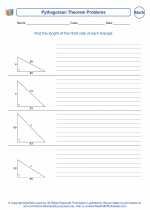 Pythagorean Theorem Problems
Pythagorean Theorem Problems  Worksheet/Answer key
Worksheet/Answer key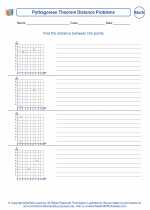 Pythagorean Theorem Distance Problems
Pythagorean Theorem Distance Problems  Worksheet/Answer key
Worksheet/Answer key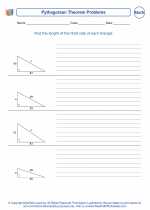 Pythagorean Theorem Problems
Pythagorean Theorem Problems  Worksheet/Answer key
Worksheet/Answer key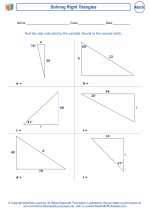 Solving Right Triangles
Solving Right Triangles  Worksheet/Answer key
Worksheet/Answer key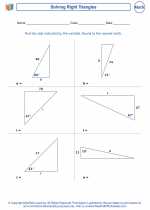 Solving Right Triangles
Solving Right Triangles 

 Study Guide
Study Guide
 Worksheet/Answer key
Worksheet/Answer key
 Worksheet/Answer key
Worksheet/Answer key
 Worksheet/Answer key
Worksheet/Answer key
 Worksheet/Answer key
Worksheet/Answer key
 Worksheet/Answer key
Worksheet/Answer key
 Worksheet/Answer key
Worksheet/Answer key
 Worksheet/Answer key
Worksheet/Answer key
 Worksheet/Answer key
Worksheet/Answer key
 Worksheet/Answer key
Worksheet/Answer key
 Worksheet/Answer key
Worksheet/Answer key

The resources above cover the following skills:
Geometry (NCTM)
Analyze characteristics and properties of two- and three-dimensional geometric shapes and develop mathematical arguments about geometric relationships.
Create and critique inductive and deductive arguments concerning geometric ideas and relationships, such as congruence, similarity, and the Pythagorean relationship.